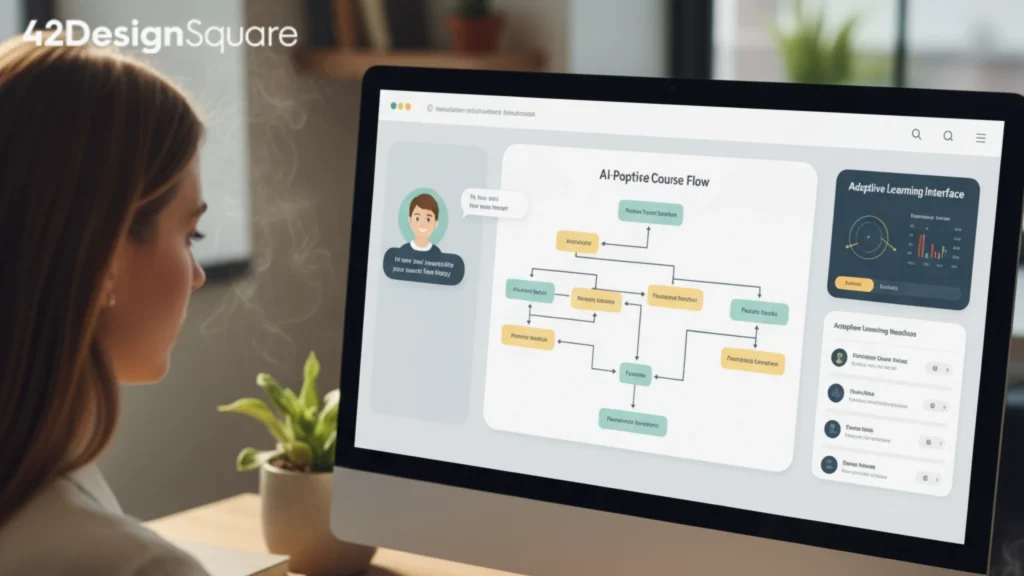Instructional Design Meets Technology: Custom eLearning Design in the AI Era
Conventional eLearning once relied on long slides, straightforward videos, and one-size-fits-all quizzes. But today, learning assumptions have changed. Modern learners want speed, relevance, and interaction. Organizations, meanwhile, want training that delivers quantifiable results and not just completion certificates.
So where do we find the equilibrium?
The answer lies in merging instructional design prowess with AI-powered technology. Instructional designers bring form, psychology, and clarity. AI brings automation, personalization, and analytics. Jointly, they create digital learning innovation that actually transforms performance.
In this article, we’ll check out:
- What AI in instructional design actually means
- How it amplifies custom eLearning design
- Pragmatic use cases across industries
- A swift checklist to know if your business is ready
Let’s see how strategy and technology now walk arm-in-arm in the learning world.
What Is AI-Driven Instructional Design?
Instructional design pivots on structuring learning for maximum understanding and retention. It answers questions like:
- What should the learner know?
- How should we present the opinion?
- How do we compute understanding?
Now, AI in instructional design adds support at every stage. It assists in:
- Create draft content
- Personalize learning journeys
- Analyze learner behavior
Think of AI as a smart assistant but not a replacement.

AI in instructional design
How AI Is Transmuting Custom eLearning Design
Personalized Learning Paths
AI tools, such as Docebo, TalentLMS AI, and EdApp, adapt module flow based on achievements. Slow learners receive hints. Fast learners skip repetition.
Quicker Content Production
Authoring tools like Articulate 360, Synthesia, and Vyond AI enable faster creation of videos, quizzes, and simulations without heavy studio work.
Real-Time Feedback and Analytics
AI dashboards track every learner click. This assists L&D teams identify confusing topics and improve quickly.
Voice-Driven and Simulation-Based Experiences
AI avatars and chatbot tutors make training feel more realistic and human.
Example: A sales trainee can practice objections with an AI customer bot.
Advantages of Blending Human Design with AI Technology
- Content remains accurate, structured, and empathetic
- Development time decreases by up to 40%
- Learner engagement multiplies through dynamic interactions
- Organizations save long-term training costs
“AI accelerates delivery, but instructional design warrants direction.”

digital learning innovation
Case Study Snapshot
A logistics company needed to train 1,500 new recruits across multiple regions. Their previous slide-based modules were disregarded.
42 Design Square introduced AI-enabled process simulations with branching decisions.
Completion jumped up from 48% to 93%.
Supervisors detailed fewer operational errors in Month One.
When Should You Initiate AI into Learning?
You’re ready if:
- You have repetitive content that requires modernization
- Your workforce has varied roles and skills
- Your existing LMS deficits engagement or feedback loops
- You want data-backed proof of training impact
Conclusion
Instructional design and AI are not rivals. They are collaborators in modern learning. When combined well, they turn training from static content into interactive performance boosters.
At 42 Design Square , we are proficient in building custom eLearning experiences powered by smart technology and human-centered design. Whether you need adaptive learning paths, gamified simulations, or AI-assisted onboarding; we position it with strategy and precision.
Ready to explore your AI learning potential?
Let’s design smarter together.
.
Frequently Asked Questions
1. What is custom eLearning design in the AI era?
Custom eLearning design is the process of crafting tailored training solutions for an organization’s specific needs. With AI in instructional design, content becomes more adaptive, interactive and aligned with each learner’s pace and role.
2. How does AI in instructional design enhance learning outcomes?
AI in instructional design enables real-time personalization, faster content creation and insightful analytics. It supports human designers by automating repetitive tasks and focusing on strategic learning experiences, which leads to stronger engagement and retention.
3. What role does digital learning innovation play in modern L&D?
Digital learning innovation involves integrating new technologies—AI-driven tools, simulations, adaptive pathways—into training programs. This elevates custom eLearning design by turning static modules into dynamic, outcome-centred experiences.
4. When should an organization invest in custom eLearning design?
An organization should invest in custom eLearning design when generic off-the-shelf content fails to meet unique business objectives, learner needs vary widely, or there’s a demand for scalable digital learning innovation to future-proof training.
5. Will custom eLearning design replace instructor-led training with AI?
No. While AI in instructional design augments digital learning, instructor-led training still plays a crucial role for complex skills and human connection. The best approach blends custom eLearning design with digital learning innovation to maximise impact.






